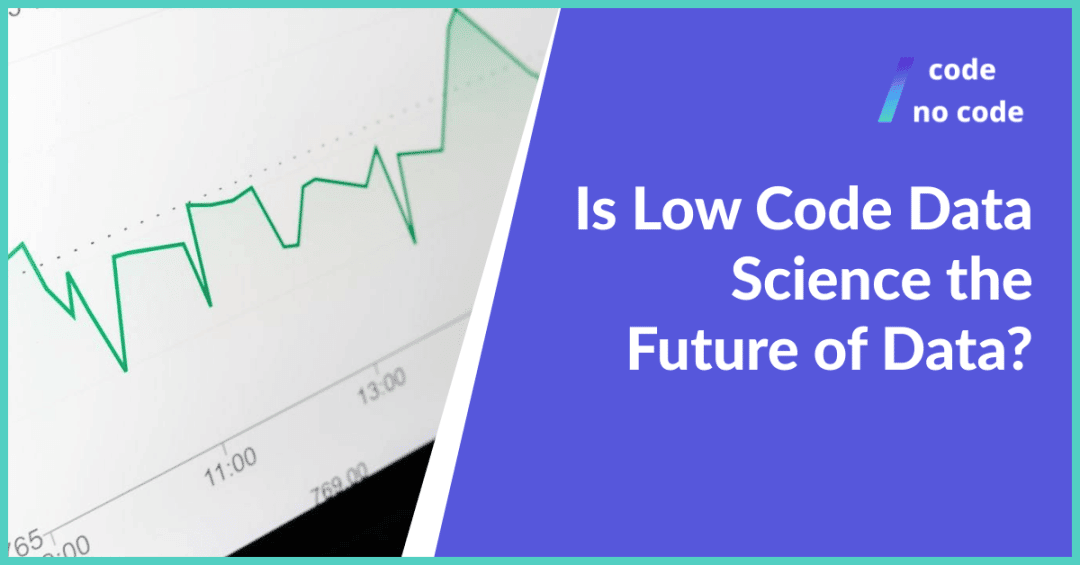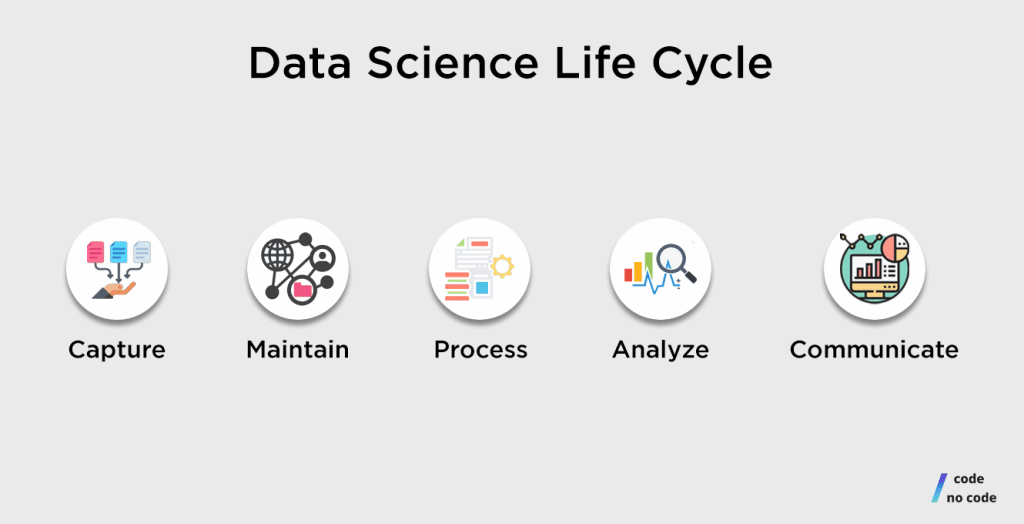
Power Pages vs Power Apps: In-Depth Comparison
Choosing between Power Pages vs Power Apps depends on what you need. They serve different goals, and knowing their strengths can save you time. Here’s a clear...
Data Science as a discipline has evolved and got itself placed as the most employable skill in 2023 [1] in almost every list. Data is crucial for everything from making business decisions to framing national policies. Artificial Intelligence and Machine Learning are two of the top components involved in the domain of Data Science.

Since it is a highly employable skill, the demand for a Data Scientist is increasing globally. To bridge the talent gap of Data Scientists, we can see Low Code Platforms making Data Science more accessible and easier for citizen developers.
In this blog, we will talk about the scope of Low Code Data Science with practical application-based use-cases and platforms that help you deploy it.
It is a field of study encompassing high volumes of data and the tools to derive meaning from it. Data is used to find patterns and solutions to make better decisions or understand something to a deeper degree.
Data Scientists train complex machine learning models to forecast future trends and sentiments.
A few years ago, we used Data Science only for research purposes as it was a new field and in a development stage. Now it has use cases across all the industries and business functions.
You can see the HR department using Data Science to find valuable traits in a candidate that would be a perfect fit for the company. Marketing and Sales professionals use machine learning models for data analysis and generating customer experience insights.

It is the same field of study as regular Data Science, albeit accessible to citizen Data Scientists (Non-technical business users who want to perform the same functions as Data Scientists).
Low Code and No Code platforms have democratized AI so that one can use drag and drop tools for model training, data visualizations, and customized application development. We will talk about specific Low Code tools that you can use to build these models.
Let’s have a look at some terminologies for context throughout the blog.

To solve any kind of problem through Data Science, you will have to go through these five stages of the Data Science Life cycle.
The first stage involves capturing and extracting the raw unstructured data according to your requirements.
At the maintenance stage, you perform different functions on your data like staging, cleansing, and processing. In short, you give structure to your data.
Once the data is cleansed, you process it to make it machine-readable and feed it to your model. Data Mining, Clustering/Classification, Data Modeling, and Data Summarization are a part of this process.
This stage is the lifeblood of Data Science. You put the processed data through analyses like Predictive Analysis, Regression, Text Mining, and Qualitative Analysis.
The Data Scientist finally submits the data findings through visually appealing charts or reports to make them more palatable.
Low Code platforms cover various operations to solve your problems. Visual programming has enabled everyone to perform these functions. Here are some specific use-cases that can be accomplished through Low Code.
Data Science starts with the collection of data. You can use Low Code platforms to integrate APIs to collect data from your sources on the web. Data scraping has become relatively more effortless, and these platforms have zero infrastructure requirements.
If you are a new business with a smaller team, you don’t need to worry about developing in-house servers and databases to facilitate data collection. Low Code helps you with pre-built connectors to access a higher number of data sources on the internet.
Low Code Tools we recommend:
Most of the data you find on the internet is unstructured. To gain insights, you need to structure your data by removing incorrect, incomplete, improperly formatted, or duplicated data. This process is also known as data scrubbing.
Low Code platforms can be used to cleanse and make the data readable through automation. Drag and drop interface lets you build visual automation for constantly keeping your data clean through bots.

Low Code Tools we recommend:
Data Science is not just limited to collecting, organizing, and reading the data. The discipline involves many complex functions with the help of Deep Learning, Machine Learning, and AI.
Low Code has made it possible for non-developers to train and deploy ML solutions. These solutions can be used for many tasks like analyzing trends across the industry or training your Low Code chatbot to interact with the customers.
Low Code Tools we recommend:
This is the most attractive aspect of Data Science for co-founders and business users. Low Code platforms can enable you to generate business insights from the scrubbed data and trained Machine Learning models.
Although it is never the core functionality of any Low Code app, it is a powerful supporting function. Visualize your business data and insights in a sleek format derived from your dataset.
Here are some top ways to visualize and communicate your data:

Low Code Tools we recommend:
When you watch a show on Netflix or listen to a song on YouTube, they recommend another you might like. That is made possible through a ‘Recommendation System’.
These are complex software systems that suggest relevant items of interest given a specific application domain to user.[3]
Although it seems simple, you would need to have an intermediate understanding of logic and math to develop a highly efficient recommendation system through Low Code.
Low Code Tools we recommend:
Nothing is perfect or flawless. The traditional approach of programming has some advantages over Low Code platforms when it comes to Data Science.

Since the future of tech is data, we predict a rise in demand for Data Scientists over the years. Becoming a Low Code Data Scientist is not a matter of days. It takes a lot of research and understanding of Data Science, Math, and Logic to deploy solutions.
Here are some resources that would help you get started in the world of Low Code Data:
Theoretical articles: KNIME is a thought leader in Advanced Data Science through Low Code. They have a series of articles that will help you understand the theory of machine learning algorithms and the capabilities of Low Code solutions.
AutoML beginner’s guide: This guide will help you navigate Google’s AutoML. It is an introductory guide that covers the basics. You can find more resources on the vertex-ai page.
Introduction to Sagemaker: It will teach you how to Build, Share, and Deploy a Machine Learning model with Low Code/No Code.
Low Code Data Science will be the future of data as it makes data management and analytics more accessible to people. We can see the potential to make the entire process more efficient and faster for Data Scientists. Let’s see how much impact can it create on the data landscape in the future.
Follow us on Twitter to stay tuned with trends and updates in the Low Code/No Code industry.